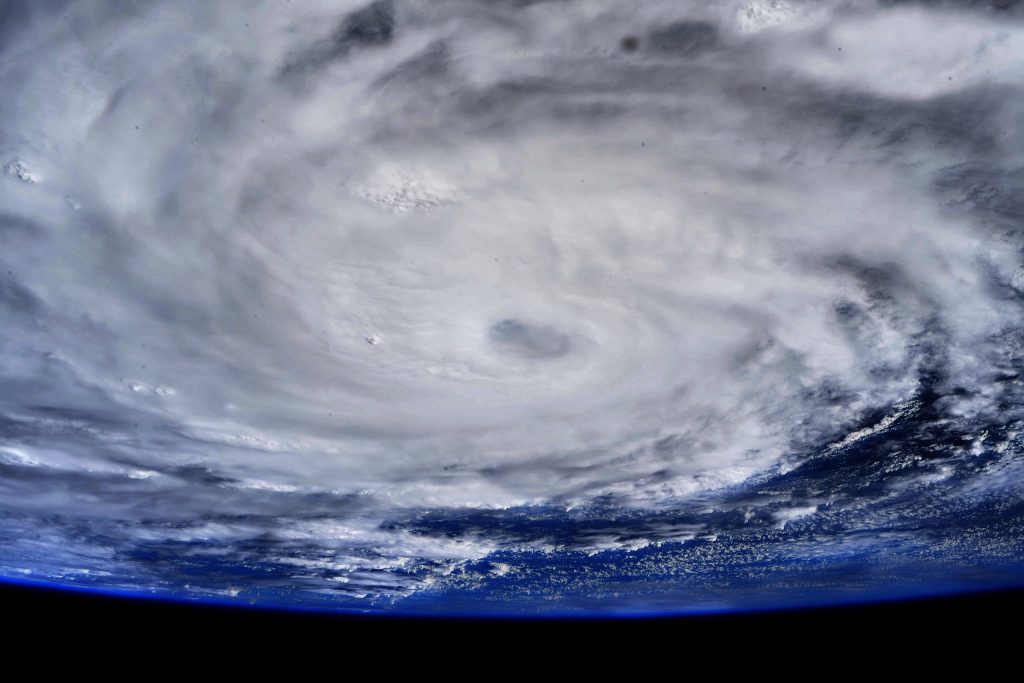July 26, 2020 – NASA Infrared Data Shows Hanna a Heavy Rainmaker
Infrared imagery of Tropical Storm Hanna obtained from NASA’s Aqua satellite found powerful storms with heavy rainmaking capabilities along the Texas coast.
On July 26, NOAA’s National Hurricane Center (NHC) posted a Tropical Storm Warning from Barra el Mezquital, Mexico to Baffin Bay, Texas.

NASA’s Infrared Data Reveals Heavy Rainmakers
Tropical cyclones are made of up hundreds of thunderstorms, and infrared data can show where the strongest storms are located. That is because infrared data provides temperature information, and the strongest thunderstorms that reach highest into the atmosphere have the coldest cloud top temperatures.
On July 27 at 4:35 a.m. EDT (0835 UTC), the Moderate Resolution Imaging Spectroradiometer or MODIS instrument that flies aboard NASA’s Aqua satellite used infrared light to analyze the strength of storms within Hanna. MODIS found the most powerful thunderstorms were east of Hanna’s center and over the Gulf of Mexico, where cloud top temperatures were as cold as minus 80 degrees Fahrenheit (minus 62.2 Celsius). NASA research has found that cloud top temperatures that cold indicate strong storms with the potential to generate heavy rainfall.
Strong storms with cloud top temperatures as cold as minus 70 degrees Fahrenheit (minus 56.6. degrees Celsius) were over land, and were dropping large amounts of rain.
NHC Forecast for Heavy Rain and a Key Message
On July 26, NOAA’s National Hurricane Center (NHC) posted a Tropical Storm Warning from Barra el Mezquital, Mexico to Baffin Bay, Texas.
Forecasters at NOAA’s National Hurricane Center (NHC) use NASA’s infrared data in their forecast. One of the Key messages on Hanna is about its rainfall potential. NHC noted that, “Hanna is expected to produce total rain accumulations of 6 to 12 inches, with isolated maximum amounts of 18 inches through Monday in south Texas and into the Mexican states of Coahuila, Nuevo Leon, and northern Tamaulipas. This rain will produce life-threatening flash flooding, rapid rises on small streams, and isolated minor to moderate river flooding. Hanna is also expected to produce 2 to 4 inches of rain along the upper Texas and Louisiana coasts.”
Other NHC Key Messages
NHC’s other key messages on Hanna include storm surge, winds, and isolated tornadoes. Water levels along the Texas coast will gradually subside through this morning. Tropical storm conditions will continue near the center of Hanna for the next several hours and along the Texas and northeastern Mexican coast in the warning area for a few more hours. Swells generated by Hanna will continue to affect much of the Texas and Louisiana coasts for another day or so. These swells are likely to cause life-threatening surf and rip current conditions. A few tornadoes are possible today into this evening across parts of south Texas.
Hanna’s Status on July 26, 2020
At 8 a.m. EDT (1200 UTC), the center of Tropical Storm Hanna was located near latitude 26.2 north, longitude 99.1 west. Hanna is moving toward the west-southwest near 9 mph (15 kph) and this motion is expected to continue through Monday. Maximum sustained winds are near 50 mph (85 kph) with higher gusts. The estimated minimum central pressure is 992 millibars.
Tropical-storm-force winds extend outward up to 115 miles (185 km) mainly over water to the east of the center. A wind gust of 49 mph (80 kph) was reported within the past couple of hours at Port Isabel-Cameron County Airport.
Hanna’s Forecast from NHC
Rapid weakening is expected as the center of Hanna moves farther inland, and the cyclone is expected to weaken to a tropical depression later today and dissipate Monday or Monday night. On the forecast track, the center of Hanna should continue to move farther inland over northeastern Mexico through tonight.
Typhoons/hurricanes are the most powerful weather events on Earth. NASA researches these storms to determine how they rapidly intensify, develop and behave. NASA’s expertise in space and scientific exploration contributes to essential services provided to the American people by other federal agencies, such as hurricane weather forecasting.
By Rob Gutro
NASA’s Goddard Space Flight Center
July 26, 2020 – International Space Station View of Hanna

